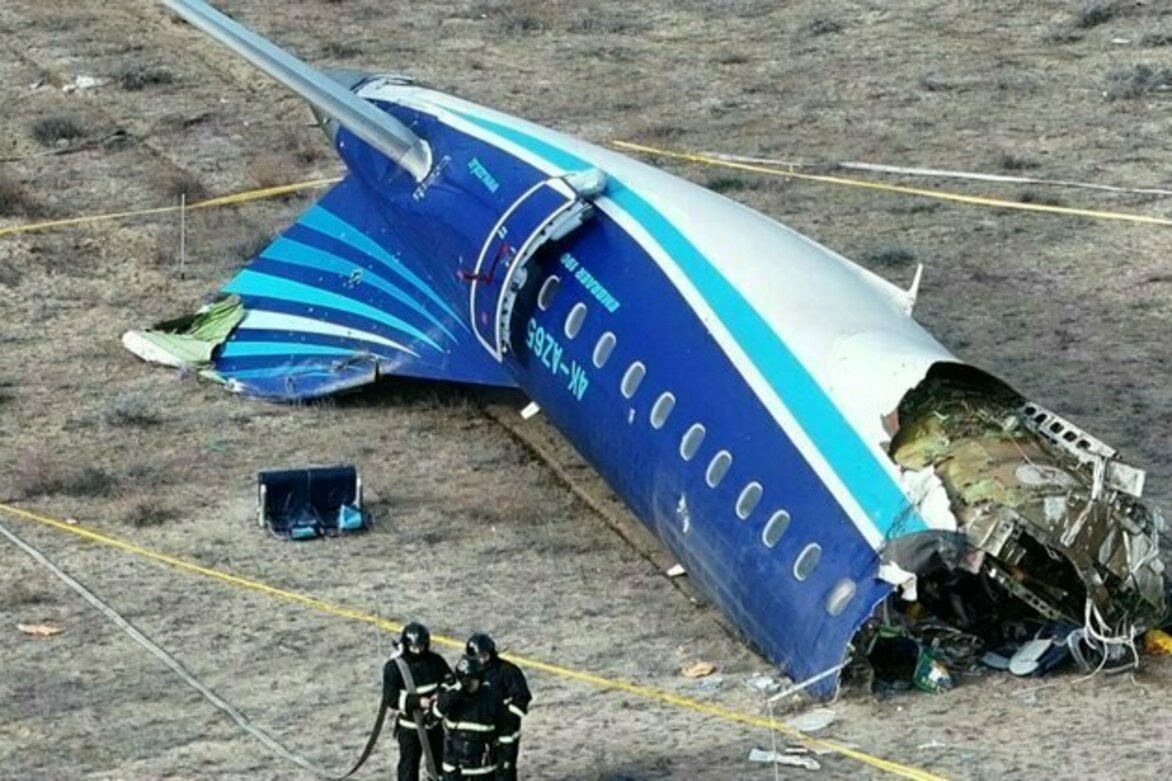Skies In Turmoil: Military Conflicts Remapping Global Aviation
RFE
29 Jul 2025

High above, the familiar pathways of global air travel are vanishing. Where pilots once flew straightforward transcontinental routes, they now navigate a sky that looks like shattered glass -- millions of flights squeezed into congested corridors. At the same time, vast swaths of airspace remain eerily empty or bristle with flying missiles and drones.
This shift is no accident. The proliferation of wars, regional hostilities, and military escalations in recent years has made the world's skies more dangerous and unpredictable than at any time since the Cold War. From Russia to the Middle East and across Africa, "no-fly zones" have multiplied, throwing international aviation into crisis and reshaping the economics, safety, and carbon footprint of flying.
Russia's Air Chaos: The New Normal
In early July 2025, chaosunfoldedat airports across Russia. On the weekend of July 56 alone, over 2,000 flights were canceled or delayed after a barrage of Ukrainian drone attacks prompted the shutdown of large swaths of Russian airspace.
At Moscow's Sheremetyevo Airport, passenger Tatyana described the scene as "a catastrophe." Lounges were overwhelmed, with peoplesprawledacross the floors, and basic amenities like drinking water had run out. "There was nowhere to sit, and people were sleeping on the tile," she said.
In St. Petersburg, taxi drivers charged up to 80,000 rubles ($1,025) for rides to Moscow as train tickets sold out following shutdowns at Pulkovo Airport. On July 6 alone, more than 15,000 passengers were stranded at Sheremetyevo, while smaller airports in Kaluga, Tambov, and Pskov suspended all operations.
Russian defense officials claimed they had intercepted up to 120 drones that night, with several brought down just kilometers from Moscow. Authorities cited "external interference" as the reason for the repeated airspace closures, which have now become a common occurrence. Russia has endured over 600 airport shutdowns since its full-scale invasion of Ukraine in 2022.
Stranded in the Sky
But if being stranded in an airport is miserable, imagine being stranded in the sky. In June 2025, after Iran launched missiles at the U.S. Al Udeid Air Base in Qatar, surrounding nations rapidly closed their airspace. A Qantas flight from Perth to Paris spent 15 hours circling beforereturningto Australia without landing. Another was forced to reroute to Singapore.
India-Pakistan tensions in May 2025 led to theclosureof key corridors, forcing flights between Europe and Southeast Asia to take longer and more expensive routes. Flight times extended by up to 10 hours, with emergency fuel stops in unfamiliar airports becoming routine.
Flightradar24 datashowspilots now face "super-density" corridorsnarrow lanes packed with aircraft, with vast no-fly voids on either side. Running into heavy congestion significantly increases the risk of collisions, all while overtasked air traffic controllers rehearse logistical juggling acts.
Over the Red Sea, Libya, Sudan, and Syria, and in parts of Sub-Saharan Africa, flights are increasingly diverted due to safety concerns. Air traffic control in conflict zones is often patchy or nonexistent, and pilots must coordinate detours midair using outdated or alternative channels.
Environmental and Economic Fallout
All this rerouting incurs a substantial environmental cost. According to a recentstudyby the University of Reading in the UK and the Institut Pierre-Simon Laplace in France, avoiding Russian airspace alone resulted in an 8.2 million ton increase in CO emissions over one year. Affected flights burned 13 percent more fuel on average, with EuropeAsia and North AmericaAsia routes seeing the sharpest spikes.
A separate 2024research workby Viktoriia Ivannikova, a leading aviation researcher at Dublin City University, found that rerouted flights from Europe to Asia now cost airlines up to 39 percent more in fuel and emit up to 40 percent more carbon dioxide -- crippling figures for an industry already under pressure to decarbonize.
Winners and Losers in the Sky Wars
Chinese carriers haveseizedthe opportunity to access Russian airspace. Their routes from Europe to Asia are faster and more affordable, squeezing out Western competitors unrelated to politics.
British Airways evencanceled its LondonBeijing and one of its daily LondonHong Kong flights in summer 2024 due to heavy losses.
Finnair, Helsinki's flagship carrier,lostits edge connecting Europe to Asia. A flight to Shanghai that once took nine hours on China's Juneyao Airlines now takes 12 hours or more on Finnair.
Even in the US, carriers feel the strain. United Airlines, for instance,shiftedits DelhiNewark route from a 13-hour direct flight to a 15-hour journey via Europe and the Middle East, due to the closure of Russian skies. This adaptability, though a response to adversity, is a testament to the industry's resilience in the aviation sector.
Air India capitalized briefly, butlostleverage after airspace restrictions from Pakistan following an April 2025 terrorist attack in disputed Kashmir.
Missiles in the Sky
In regions adjacent to war zones, the skies are no longer the sole domain of commercial jets. Military activity now overlaps directly with civilian routes. In February, China conducted unannounced live-fire naval drills in the Tasman Sea. Commercial aircraft had toreroute midairafter a Virgin Australia pilot accidentally picked up the warning on an unused radio frequency.
In December 2024, a Russian air defense system accidentallyshot downan Azerbaijani AZAL flight near Aqtau, Kazakhstan. Thirty-eight of the 67 people on board died. In another case, a Kyrgyz-leased cargo plane wasshot downin Sudan by rebel fighters who mistook it for a military supply aircraft.
These aren't isolated incidents. Ukraine International Airlines Flight PS752 wasdowned byIran in 2020, and Malaysia Airlines Flight MH17 wasdestroyed bya Russian-supplied missile over Ukraine in 2014. Both tragedies served as stark warnings: commercial planes are increasingly at risk of becoming collateral damage.
The global air travel system, once a marvel of speed, safety, and connectivity, now resembles a complex web of geopolitical interests. Every new conflict reshapes the map. Each closure, each rerouting, and each airspace denial compounds delays, emissions, and costs.
